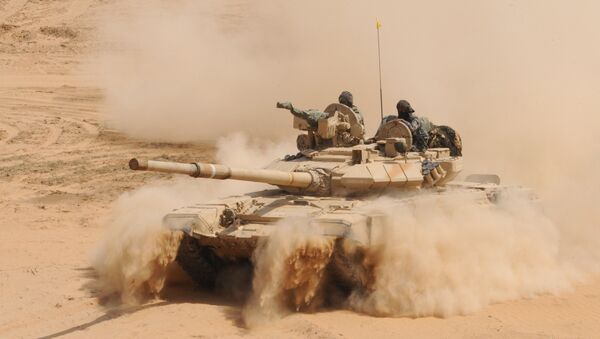In a report on the new weapons deployed to the Syrian conflict, Robert Fisk drew attention to tank-based anti-missile systems, as well as night vision and reconnaissance systems.
The new tanks supplied to the Syrian army have the ability to deflect TOW-like missiles, although their full implementation has yet to be seen. A video released by rebels showed the T-90 surviving a hit by a TOW missile, but an open hatch prevented the deployment of an aerosol screen used to deflect such missiles before they reach the tank.
"Syrian officers have been shown how the new T-90 anti-missile system causes rockets to veer off course only yards from the tanks when fired directly at them," Fisk wrote.
The video appears to be the manufacturer's demonstration of the T-90's Shtora system, mounted on a BMP-3. Images on social media have also shown what appears to be Arena-E radars mounted on Syrian equipment, although the radar by itself cannot deflect missiles without an aerosol screen and infrared beams which confuse the missile's self-tracking.
When it comes to evidence of the system being used to save lives and equipment, video footage is less clear. A video from September 16 showed a TOW missile exploding prior to reaching its target.
The video has been criticized, however, as the flight time of the missile is over 22 seconds, which is the limit for TOW missile flight.
A more recent video showed the effect of a TOW-2A anti-tank guided missile on a T-90A tank, with the tandem warhead failing to penetrate the tank's reactive armor.
The video cuts off before the aftermath of the explosion is seen, other than the gunner running out of the tank, apparently as a result of a concussion due to an open hatch.
It has, however, shown the T-90A superior in guided missile protection, compared to the Abrams tank, one of which was destroyed by Yemen's Houthi militias using the outdated 9K111 Fagot ATGM.



